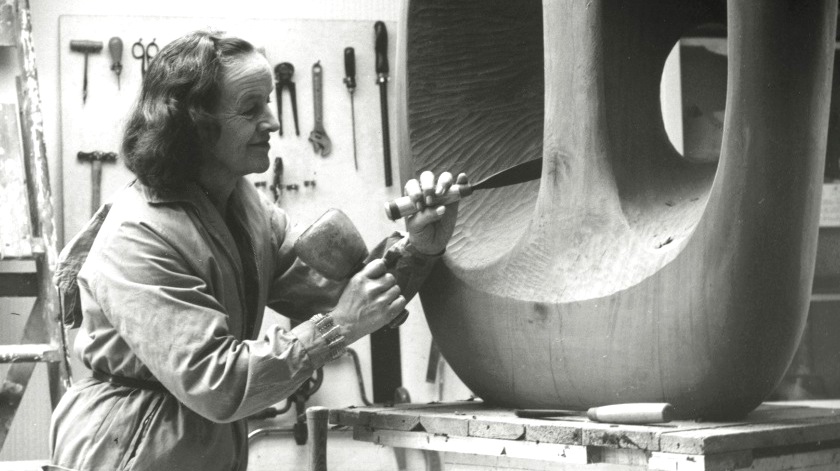Barbara Hepworth has been honoured with a google doodle. The animated gif sees the sculptor chiselling away at one of her trademark works. This marks a turning point for championing British women artists.
While always remaining constant to my conviction about truth to material, I have found greater freedom for myself – BH
Hepworth’s 2015 retrospective exhibition at Tate Britain redefined her career and introduced her work to a new generation of art enthusiasts. Hepworth was a British sculptor, painter and printmaker. Born in Wakefield, Yorkshire in 1903. She was a leading figure in the international art scene throughout a career spanning five decades. She was the eldest child of Herbert and Gertrude (née Johnson) Hepworth. Her father was a civil engineer for the West Riding County Council.

At Wakefield Girls’ High School Hepworth was inspired by seeing images of Egyptian sculpture and encouraged by the headteacher, Miss McCroben, to apply for a scholarship to Leeds School of Art. Following this, in 1921, she began her studies at the Royal College of Art in London. Alongside fellow Yorkshire-born artist Henry Moore. Both students continued their studies in sculpture. Both became leading practitioners of the avant-garde method of Direct Carving (working directly into the chosen material) avoiding the more traditional process of making preparatory models and maquettes from which a craftsman would produce the finished work.
From 1924 Hepworth spent two years in Italy, and in 1925 married her first husband, the artist John Skeaping, in Florence; their marriage was to last until 1931. From 1932, she lived with the painter Ben Nicholson and, for a number of years, the two artists made work in close proximity to each other, developing a way of working that was almost like a collaboration. They spent periods of time travelling throughout Europe, and it was here that Hepworth met Georges Braque and Piet Mondrian and visited the studios of Picasso, Constantin Brancusi, and Jean Arp and Sophie Tauber-Arp. The experience was a hugely exciting one for Hepworth, for she not only found herself in the studios of some of Europe’s most influential artists, which helped her to approach her own career with renewed vigour and clarity but also found their mutual respect. The School of Paris had a lasting effect on both Hepworth and Nicholson as they became key figures in an international network of abstract artists.
Hepworth moved to St Ives in 1939, the same year she began making stringed sculptures. As seen in her ‘Landscape Sculpture’ works of the late 1940s, Hepworth connected these forms to nature noting, ‘the strings were the tension I felt between myself and the sea, the wind or the hills.’ Living in close proximity to the countryside, Hepworth reflected in 1946, ‘The main sources of my inspiration are the human figure and the landscape; also the one in relation to the other.’
In 1951, Hepworth had a solo exhibition at Wakefield Art Gallery, which toured to York and Manchester.
Hepworth took on a number of important public commissions in later life. On permanent display at The Hepworth Wakefield is the aluminium prototype for Winged Figure (1961–3), commissioned by John Lewis for their flagship store on Oxford Street, London. At nearly six metres high, this is the only working model to survive from the monumental commissions Hepworth received at this time.
Hepworth was prolific during her later years, making nearly as many works during the 1960s as between 1925 and 1960. She experimented with new materials, working in bronze, slate and printmaking noting, ‘while always remaining constant to my conviction about truth to material, I have found a greater freedom for myself’.’

